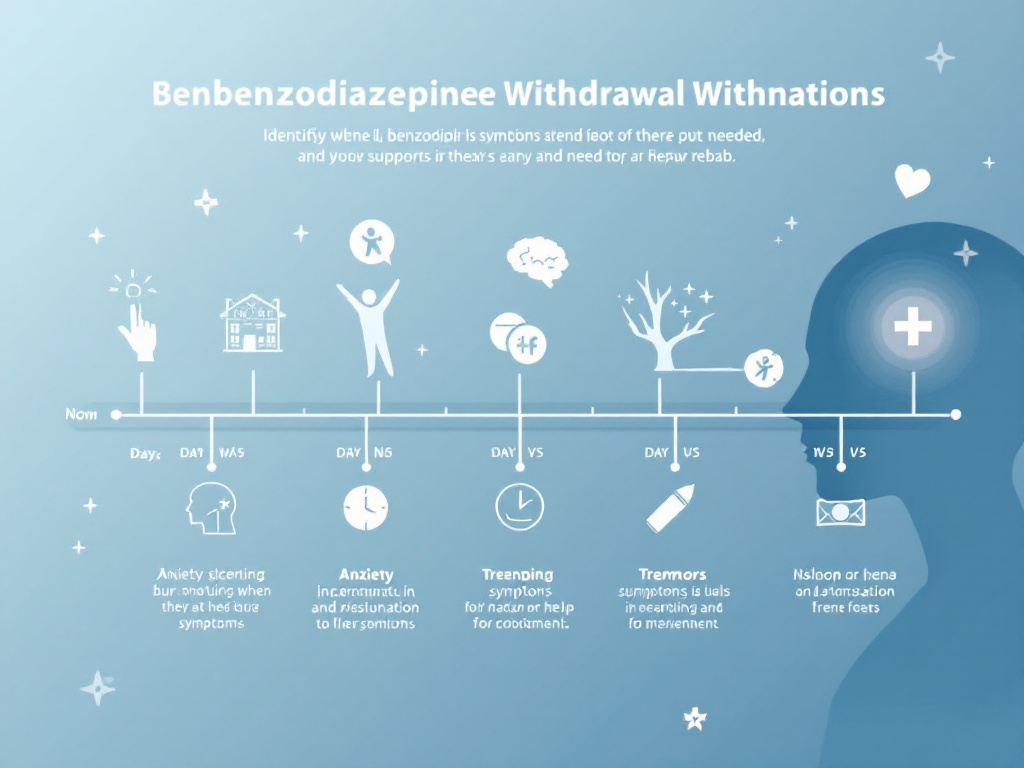Fentanyl is one of the most powerful and dangerous opioids on the market today for severe pain relief. However, it is now a driving force behind several overdose deaths in the united states. Are you or a loved one struggling with fentanyl addiction? A safe and medically supervised detox is the first and most important step toward recovery.
Questions Answered in This Article:
- What Is Fentanyl?
- Signs You Need Fentanyl Detox
- How Does Fentanyl Detox Work?
- What To Expect During Fentanyl Detox
- Why Should Fentanyl Detox Be Personalized?
- How Does Detox Fit Into Full Fentanyl Addiction Program?
Break free from Fentanyl.
Safe, medical detox starts now.
What Is Fentanyl?
Fentanyl belongs to the family of synthetic opioids and is 50 to 100 times more potent than morphine. Medical practitioners legally prescribe fentanyl in small doses for chronic pain, cancer, and post-surgical discomfort.
Why Is Fentanyl Addictive?
Fentanyl is addictive because it affects the brain’s reward system. Even small doses can create intense euphoria, making the brain quickly crave more. Here’s why fentanyl is so dangerously addictive:
1. High Potency and Rapid Effect
Fentanyl binds tightly to opioid receptors in the brain and spinal cord, producing:
- Fast pain relief
- A powerful “high” or sense of well-being
- Strong sedation
Fentanyl acts so quickly and intensely. Thus, the brain builds tolerance fast. It means users need more and more to feel the same effects.
2. Triggers Dopamine Release
Fentanyl causes a massive release of dopamine, the brain’s “feel-good” chemical. This flood of pleasure:
- Reinforces drug use
- Creates a strong emotional reward loop
- Trains the brain to seek fentanyl repeatedly
Over time, the brain becomes dependent on the drug to feel any pleasure at all.
3. Physical Dependence Develops Quickly
With regular use, even over a short period, fentanyl can cause the body to:
- Adapt to the drug
- Go into withdrawal when it is not present
- Crave it to avoid feeling sick or anxious
Withdrawal symptoms push people to keep using fentanyl, even when they want to stop.
4. Illicit Fentanyl Is Often Hidden
Many people become addicted without realizing they are even taking fentanyl. It is often:
- Mixed into heroin, cocaine, or fake pills
- Sold as something else (like Oxycodone or Xanax)
This accidental exposure can lead to rapid addiction—and even fatal overdose.
Fentanyl rewires the brain’s reward system, quickly creating dependence, cravings, and addiction. The drug’s strength and the “high” it gives make it one of the most addictive and dangerous substances in the world.
Don’t let addiction control your life.
Call now for safe detox.
Signs You Need Fentanyl Detox
Are you or someone you love using fentanyl regularly? You may already be dependent or addicted to the drug. Common signs that you need medical detox from fentanyl include:
- Intense cravings for fentanyl
- Needing more of the drug to feel high
- Withdrawal symptoms when not using
- Using fentanyl despite health or legal consequences
- Isolating or withdrawing from loved ones
- Mixing fentanyl with other substances like alcohol or benzos
Fentanyl addiction is a treatable medical condition, and detox is the first step toward taking back control.
Hope begins with one call.
Talk to our addiction recovery experts.
How Does Fentanyl Detox Work?
Detoxing from fentanyl is the first and most critical step in overcoming fentanyl addiction. Medical detox involves safely removing the drug from your body while managing medically supervised withdrawal symptoms.
Here’s a breakdown of how fentanyl detox works:
1. Intake & Evaluation
Your detox journey begins with a comprehensive assessment by medical professionals. They’ll evaluate:
- Your physical and mental health
- History of fentanyl or other substance use disorders
- Any co-occurring conditions (e.g., anxiety, depression)
This helps the team design personalized detox treatment programs tailored to your needs.
2. Stabilization
Detox aims to stabilize your body and mind while fentanyl leaves your system. During this phase, you’ll:
- Be closely monitored 24/7 by nurses and doctors
- Receive medications to ease withdrawal symptoms
- Get support to stay hydrated and nourished
Commonly used medications to treat withdrawal symptoms include:
- Buprenorphine/Suboxone: Eases withdrawal and cravings
- Clonidine: Reduces anxiety, sweating, and agitation
- Anti-nausea and sleep aids: To improve comfort
3. Managing Withdrawal Symptoms
Fentanyl withdrawal can be intense but is manageable with proper care. Symptoms typically start within 6–12 hours after your last dose. Medical detox helps keep you safe, comfortable, and supported through this difficult stage.
4. Transition to Treatment
Detox is just the beginning of your recovery from fentanyl addiction. After detox, you’ll be encouraged to move into a rehab or treatment program, where the focus shifts to:
- Therapy and counseling
- Building coping skills
- Treating mental health issues
- Preventing relapse
A structured treatment plan helps you maintain sobriety and rebuild your life.
Fentanyl kills.
Choose life and call for help today.
What to Expect During Fentanyl Detox
Treating opioid addiction can be intense. Fentanyl withdrawal can have complications like dehydration, seizures, and suicidal thoughts that can be fatal. However, medical professionals can manage fentanyl withdrawal symptoms, including:
Common Fentanyl Withdrawal Symptoms:
- Anxiety and agitation
- Muscle aches and chills
- Nausea, vomiting, and diarrhea
- Sweating and fever
- Insomnia and fatigue
- Rapid heart rate and high blood pressure
- Depression or suicidal thoughts
These symptoms can last up to 7–10 days. Some psychological effects may linger for weeks or months. Detoxing under medical supervision ensures safety, comfort, and emotional support throughout the process. Detox centers offer medication-assisted treatment (MAT) to reduce discomfort and prevent relapse.
Fentanyl Detox Timeline: Day-by-Day
Here’s a general overview of the fentanyl withdrawal timeline:
| Day | What Happens |
| 1–2 | Symptoms begin: anxiety, sweating, restlessness |
| 3–5 | Peak symptoms: vomiting, chills, pain, insomnia |
| 6–7 | Symptoms begin to ease, energy returns |
| 8+ | Psychological symptoms (depression, cravings) linger |
| 2–4 weeks | Transition to rehab, ongoing support essential |
Everyone’s detox experience is unique. Detox timelines vary depending on the duration of fentanyl use, dose, and overall health.
Every moment matters.
Start Fentanyl recovery before it’s too late.
Medical Detox vs. At-Home Detox: What’s Safer?
Attempting fentanyl detox at home can be dangerous because of its potency. Acute withdrawal from fentanyl can be both physically and emotionally overwhelming.
The experts do not recommend Fentanyl cold turkey. Quitting cold turkey can lead to dangerous withdrawal symptoms. Medical detox is the safest approach.
Benefits of Medical Detox:
- 24/7 monitoring by healthcare professionals
- Medications to ease withdrawal symptoms
- Immediate treatment for complications (e.g., dehydration, high blood pressure)
- Emotional and psychological support
- A structured transition into rehab or therapy
Medications like buprenorphine, Buprenorphine/Naltrexone, and clonidine are often used to manage symptoms and reduce cravings.
The Dangers of At-home Detox
At-home detox is dangerous due to:
- Risk of severe withdrawal symptoms (like dehydration, seizures, or suicidal thoughts)
- Higher risk of relapse due to intense cravings
- Lack of emotional and medical support
Medical detox offers safety, comfort, and the best chance of long-term recovery.
Why Should Fentanyl Detox Be Personalized?
There is no general solution for fentanyl addiction treatment. The best detox plans are individualized, based on:
- How long you have been using fentanyl
- Whether you’ve used other substances (alcohol, benzos, heroin)
- Any co-occurring mental health conditions
- Medical history and current health
Personalized treatment increases your chance of long-term recovery and reduces the risk of relapse or medical complications.
How Does Detox Fit into Full Fentanyl Addiction Treatment?
Once fentanyl is out of your system, the real work of long-term recovery begins. The best outcomes come from comprehensive treatment options that include:
1. Inpatient or Outpatient Rehab
- Inpatient (residential) treatment provides structure and a drug-free environment.
- Outpatient programs offer flexibility while allowing clients to continue their daily responsibilities.
2. Behavioral Therapy
Evidence-based therapies like Cognitive Behavioral Therapy (CBT), Dialectical Behavior Therapy (DBT), and Motivational Interviewing (MI) help:
- Identify triggers and cravings
- Develop coping strategies
- Address underlying trauma or mental health disorders
3. Support Groups and Peer Recovery
12-step groups like Narcotics Anonymous (NA) or alternatives like SMART Recovery offer community, accountability, and ongoing encouragement.
4. Aftercare and Relapse Prevention
Recovery is a long-term journey. After detox and treatment, aftercare plans might include:
- Sober living environments
- Ongoing therapy sessions
- Regular medical check-ups
- Relapse prevention plans
Take Control Before Fentanyl Takes Everything
Fentanyl addiction is life threatening, but recovery is possible. Every day you delay fentanyl addiction treatment, the risk of overdose and long-term health damage increases. Whether for yourself or someone you love, taking the first step today can save a life.
Are you ready to break free from fentanyl addiction? Our compassionate medical detox team at Scottsdale Detox is here to guide you every step of the way. Don’t wait for a crisis. Reach out now to begin your journey toward healing, recovery, and a life beyond opioids.






